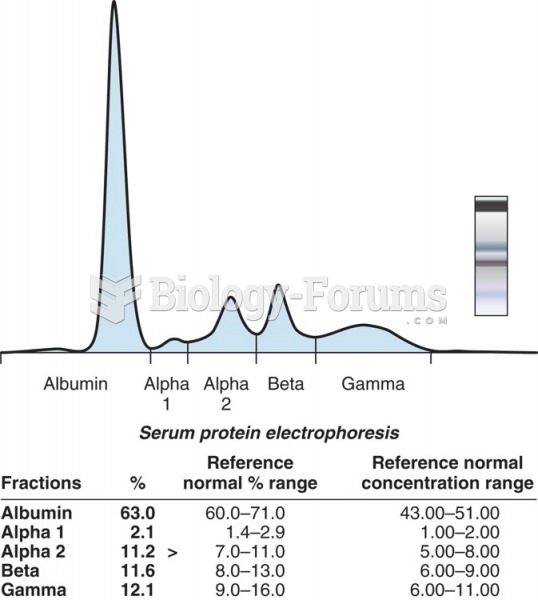|
|
|
The average adult has about 21 square feet of skin.
Urine turns bright yellow if larger than normal amounts of certain substances are consumed; one of these substances is asparagus.
According to animal studies, the typical American diet is damaging to the liver and may result in allergies, low energy, digestive problems, and a lack of ability to detoxify harmful substances.
About 60% of newborn infants in the United States are jaundiced; that is, they look yellow. Kernicterus is a form of brain damage caused by excessive jaundice. When babies begin to be affected by excessive jaundice and begin to have brain damage, they become excessively lethargic.
In the United States, an estimated 50 million unnecessary antibiotics are prescribed for viral respiratory infections.
 In the communication technique of collaborating, the nurse sends the message that the nurse and pati
In the communication technique of collaborating, the nurse sends the message that the nurse and pati
 Most PCV valves used on newer vehicles are secured with fasteners, which makes it more difficult ...
Most PCV valves used on newer vehicles are secured with fasteners, which makes it more difficult ...





